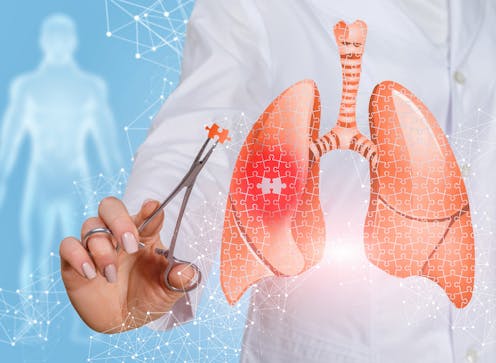
The nomination deadline to recognize transformative discoveries for the Nobel prize in physiology or medicine is fast approaching. These nominations are by invitation only and are due by the end of January.
Besides those for the lifesaving COVID-19 vaccines, several others are prominent. This includes the discovery of the cystic fibrosis gene and the drugs to treat the disease. The disease was first identified in 1938, and is no longer a cause of near-certain deaths in infants. Today, Canada leads the world with a 52-year median age of survival for patients with cystic fibrosis.
Indeed, it was in Canada that the field of cystic fibrosis research had its breakthrough in 1989 when the gene that causes cystic fibrosis was discovered along with the prevalent mutation that caused the disease. It was in Toronto that geneticist Lap-Chee Tsui, working with biochemist Jack Riordan and physician and geneticist Francis Collins, who then at the University of Michigan, designed a strategy to discover not only the gene but also the mutation that causes cystic fibrosis.
Single gene mutation
Cystic fibrosis affects the fluidity of secretions from lungs, pancreas, liver, sweat glands and other organs, making them thicker and stickier. The recessive genetic defect is due to a mutation in a single gene. Tsui had discovered that a segment of chromosome 7 harboured the mutant gene in patients.

Collins innovated methods to zero in and whittle down the DNA into fragments, and used genetic mapping markers to narrow down DNA sequences housing the cystic fibrosis gene. Using these fragments, the team fished out corresponding DNA fragments extracted from sweat gland cells of patients.
Sweat glands in cystic fibrosis patients are unable to reabsorb salts during perspiration. Riordan used easily accessible tissue samples with sweat glands from cystic fibrosis patients and their parents to grow sweat gland cells. Extracted RNA was then used to make a DNA copy, exactly as we do today for PCR tests to detect the presence of the coronavirus that causes COVID-19.
The sequencing of this DNA then enabled them to deduce a single gene product from the patients’ sweat gland cells. They then used a computer to translate the sequence into the protein this gene product generates. In this way, Tsui, Riordan and Collins deduced a single protein made up of 1,479 amino acids.
Comparing sequenced proteins
The genius of the experimental design was now to do the same for sweat gland cells isolated from the parents of cystic fibrosis patients. Proteins are made of long sequences of amino acids. When the normal protein amino acid sequence was compared with the cystic fibrosis sequence, a single amino acid known as phenylalanine was missing from the mutant protein. They had discovered the major mutation affecting about 70 per cent of cystic fibrosis patients.
The function of the protein they had uncovered was unknown at that time but there were clues that revealed its similarity to other proteins that transported substances including ions into and out of cells. Today we understand the mechanism of how the protein works as a channel that enables chloride ions to leave cells.
It is these chloride ions that enable the surface of the lungs, pancreas, sweat glands and the liver, as well as the kidney and male reproductive tract, to remain bathed in fluid and unclogged.
Treatment breakthroughs
Patients and their families have been in the forefront of the discovery process. Besides being caregivers and advocates for their children, they also supplied tissues for the discovery research. As the diagnosis and care of patients have improved, a further breakthrough was the development of drugs to treat cystic fibrosis. These have had a dramatic effect, doubling the life expectancy of patients such that today patients may reach adulthood and beyond.
Two types of drugs are available; these are known as potentiators and correctors. The potentiators help the cystic fibrosis protein maintain a channel for the chloride ions that help keep the surface of the lungs and other organs bathed in fluid.
The correctors stabilize the fragile mutant protein. The enhanced stability enables enough of the protein to bypass the quality control machinery that otherwise would target the mutant protein for degradation in one of the trash systems of the cell (the proteasome). With the combination of the corrector drugs that enable the mutant protein to access the surface of lung, pancreas, liver and sweat gland cells, and potentiator drugs that keep the ion channel open, the protein can perform its duty.
In the lungs, this chloride channel enables the fluidity of mucus that would otherwise accumulate infectious bacteria and prevent normal lung functioning, especially breathing.
Remarkably, the gene causing cystic fibrosis was discovered without knowledge of how the protein worked in cells. Furthermore, the discovery of the drugs used to treat it were discovered without knowledge of exactly how the drugs worked.
Thousands of labs globally uncovered how proteins such as the chloride channel work in cells, how they are made, how the quality control machinery could select such a subtle change as a single amino acid loss to target the mutant protein for degradation and exactly what is meant by increased protein fragility, how cells decode this and how the potentiator and corrector drugs work. This is basic science research at its best.
Applying the discoveries
The immediate consequences of the breakthrough of Tsui, Riordan and Collins in 1989 were not only for the cystic fibrosis community. In 1990, they proposed the Human Genome Project based on the proof of principle discovery of the cystic fibrosis gene they had uncovered.
Collins left the University of Michigan to direct the Human Genome Project as head of the U.S. National Human Genome Research Institute of the National Institutes of Health (NIH). This was followed in 2009 by his appointment as overall director of the NIH, a post he held until December 2021. For the drug discovery effort, it is the talented researchers in biotech and academia that discovered how to make the drugs and how they worked, with the most recent discovery in January 2022.
That the breakthroughs made by Tsui, Riordan and Collins are still yielding new insights speaks to its significance and ongoing relevance in science and medicine. The much longer lives of people with cystic fibrosis speak to its great importance to patients and their families.
John Bergeron gratefully acknowledges Kathleen Dickson as co-author.
John Bergeron does not work for, consult, own shares in or receive funding from any company or organisation that would benefit from this article, and has disclosed no relevant affiliations beyond their academic appointment.
This article was originally published on The Conversation. Read the original article.







